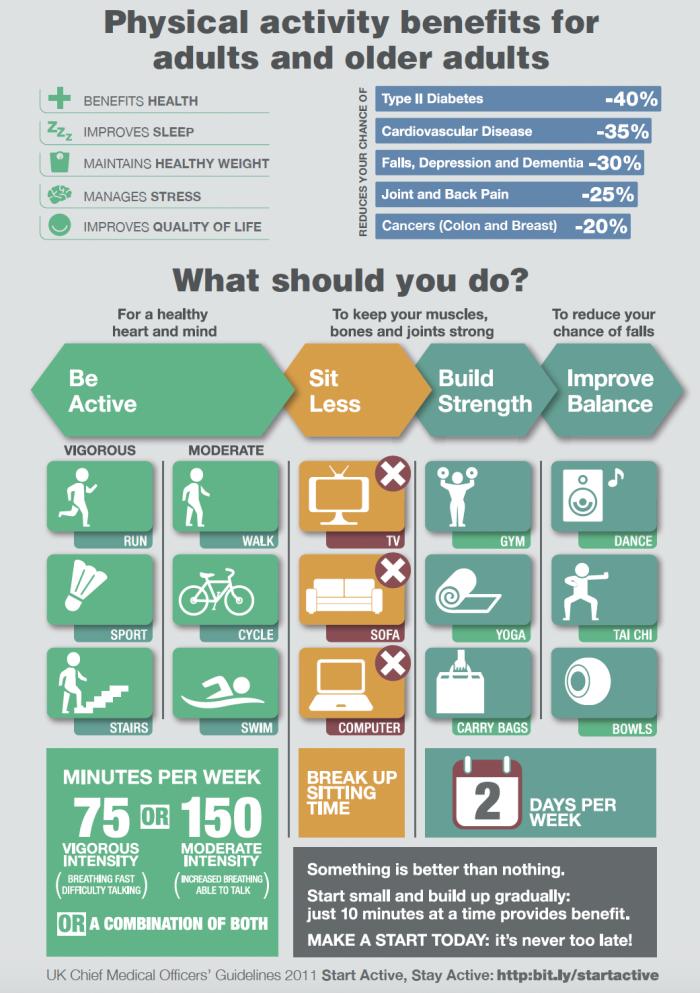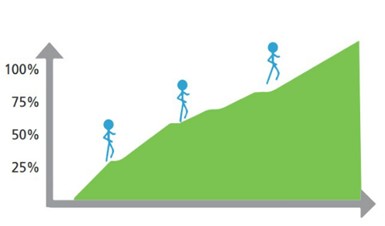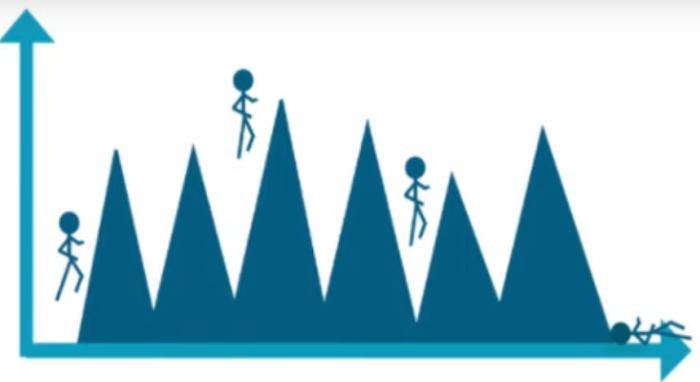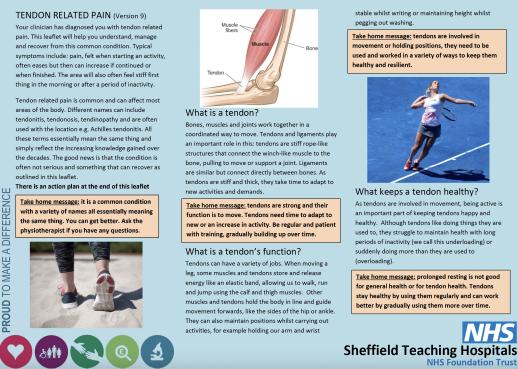Achilles tendon pain
Dealing with Achilles tendon pain
Keeping active
If the intensity of pain is such that you cannot tolerate your normal activities, such as running or walking, then consider other ways of maintaining your fitness in the meantime.
There is no set approach that has been shown to be the best so feel free to try different types of exercise and activity. Be guided by what you enjoy and what you feel able to start. Examples include cycling, swimming, lifting weights or going to an aqua-aerobics class.

If you are local to Sheffield and you would like support to increase your physical activity, then you can:
- Self-refer to Sheffield Physical Activity Referral scheme to access expert and discounted support in physical activity, including select gyms across the city.
- Find sport, leisure and activity groups in your local area.
- Visit our page on physical activity under the wider health section of the website for further guidance and support to increase your activity.
Consistent and progressive activity over time
Continuing a walking or running programme is beneficial. The achilles tendon does not like long periods of inactivity (we call this underloading) but it also doesn’t like suddenly doing more than it’s used to (overloading). Consistent activity is important. Find a level which is challenging yet repeatable (i.e. you can do it day in; day out). You can build this up over time, as the tendon gets used to it. Hills and fast speed can be particularly provocative so this may be something to work towards.
You can think of building these activities back up as a ladder. Your start point will depend on how tolerable your symptoms are, as well as your general fitness, while your end point will depend on your goals. An example may look like this, over the course of several weeks:
- Start with a medium paced walk on the flat, over a short distance…
- gradually increase the distance…
- add in some gentle slopes….
- increase the pace…
- add in some bigger hills… and so on.
Notice how it’s gradual, steady and methodical. You progress to the next step as it gets easier. Having a plan like this, will help you get back to your normal activities.
You want your progress to look this:

and not like this:

Simple activity modification
The tendon may be more sensitive to some positions or movements, so minimising these in the short term, will prevent the tendon from being unnecessarily aggravated.
- Prolonged standing
- Wearing flat shoes or walking barefoot
- Calf stretching
- Driving can be uncomfortable so trial different shoes to find what’s most comfortable
Your lifestyle
A healthy body = a healthy tendon. Habits like eating a healthy varied diet, low in processed foods, regular activity, stopping smoking (if you currently smoke) and being a healthy weight can speed recovery. Lifestyle may need to be considered if pain persists, returns, or different areas are involved. Making small improvements in lifestyle can significantly improve recovery and reduce the likelihood of suffering in the future. See the Wider Health section for more information about healthy living.
Heat or ice packs
- Heat packs. You may find that applying heat to the sore area helps relieve your pain and any associated muscular soreness. Use a microwaveable wheat bag or a hot water bottle wrapped in a towel. Keep it on for 15 – 20 minutes, checking your skin regularly to minimise the risk of suffering burn. Repeat 2-3 times per day. Do not place heat on a swollen body part.
- Ice packs. This can help to temporarily numb pain. Apply an ice pack (or a bag of frozen vegetables wrapped in a tea towel) to the area for up to 10 minutes, 2-3 times per day.
Pain medication
Pain medication may help to manage the pain, allowing you to keep mobile. Speak to a pharmacist or your GP for further advice.
Your Action Plan
This tendon pain leaflet has been created by specialist physiotherapists. It includes an action plan which you can personalise to your own situation and goals.
Further Treatment
Physiotherapy
Not everyone needs to be seen by a physiotherapist. Some people get better on their own, usually when resting is brief, and normal use and activities are resumed. However, some people may need a more tailored programme. The evidence has shown that the best first-line management of achilles pain is physiotherapy. Physiotherapy should include active strategies such as targeted and individualised exercises. The time of recovery will vary for each individual depending on their circumstances, but as a rough guide, it will often take at least 3-6 months of consistent rehabilitation before you start to see improvements, and 6-12 months for recovery, so be patient and work with your physiotherapist to get the most from your programme.
Steroid injections
Steroid injections have been used to treat this condition however research has shown them to be ineffective in the long term and they risk making the tissue (tendon) less healthy.
